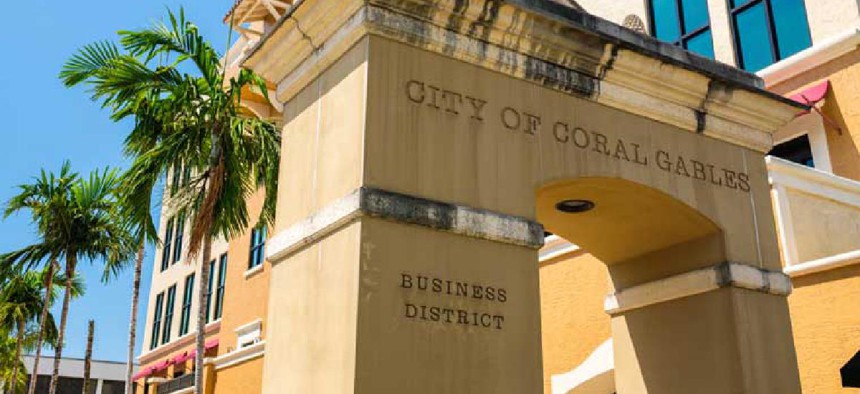Coral Gables leans into smart city services

While the city expands its hyperconnected smart city infrastructure, its urban analytics platform delivers actionable business intelligence for stakeholders.
The Coral Gables, Fla., IT Department (CGIT) recently launched two smart city services that improve access to data and expand broadband access.
Work on the new Urban Analytics Artificial Intelligence Platform began about two years ago to replace internet-of-things (IoT) dashboards that aggregate data from the city into its publicly available hub at coralgables.com/smartcity. The data comes from a variety of sources including traffic sensors, public-safety sensors, city cameras, multimodal sensors that detect both vehicles, bicycles and micromobility devices as well as environmental sensors that monitor air and water quality.
The new technology, which is made by Quantela, an “outcomes-as-a-service” company that specializes in smart cities, correlates the data from city sensors, aggregates it and runs business intelligence analytics on it. The city then shares the results publicly, said Raimundo Rodulfo, director of IT and chief innovation officer for the city.
“All that data has to be aggregated and analyzed in one central cloud repository because that’s how you get the most value from it -- the actionable value for first responders, traffic engineers, for urban planners or for the public in general,” Rodulfo said.
For example, when the city activated its emergency operations center (EOC) ahead of the effects of Tropical Storm Elsa recently, it used the urban analytics from sensors to understand the water levels in canals and the amount of traffic in hurricane evacuation zones.
Additionally, when traffic engineers and the city’s Public Works Department conduct a traffic study, they use data from the platform to understand patterns, behavior and the amount of traffic in a given intersection. With that data, they know the best way to make improvements, Rodulfo said.
The city studied traffic, pedestrian, environmental and other data during the pandemic to understand the effect that emergency conditions have on roads and city life. The information “can be correlated with other COVID-19 data to observe and predict patterns related to the impact of the crisis and the policies implemented to address it,” according to a May 2020 case study.
While working on the analytics platform, Coral Gables continued to expand its Smart Districts Urban Cyberinfrastructure. The city divided areas into smart districts, some of which have innovation corridors for broadband and high-speed communication. They’re basically economic and innovation zones where CGIT deploys hyperconnectivity and dense smart city infrastructure such as traffic, environmental and noise sensors plus analytics, Rodulfo said.
“Today when we talk about smart cities, we are talking about hyperconnectivity,” he said. “We are talking today about the ability of vehicles to connect to surrounding environment or connect vehicle-to-vehicle or vehicle-to-cloud. All those capabilities of smart mobility are also enabled by smart districts.”
A third accomplishment Rodulfo touted is the installation in June of the country’s first smart, integrated pole -- the Ekin Spotter V2 -- which sits in the city’s financial corridor. Some of the services consolidated in the nearly 10-foot high pole are free public Wi-Fi, traffic and safety sensors, environmental sensors, computer vision and artificial intelligence-based IoT edge analytics and alerts. It provides live video and real-time analytics to the Coral Gables Smart City Hub public platform, the Urban Analytics AI platform, the Community Intelligence Center and EOC.
Additionally, the city is currently beta testing AIDA, a new AI Digital Assistant for the Coral Gables Smart City Hub Public Platform that helps people navigate the site and find the information they want.
Rodulfo credits infrastructure changes that the city started 10 years ago with enabling today’s innovation.
In the last six years, Coral Gables has accelerated investments in smart city technologies – hybrid cloud, hyperconnectivity, IoT devices and artificial intelligence that analyzes sensor data, Rodulfo said.
“A smart city leverages technology and innovation and best practices to improve quality of life -- in mobility, public safety, transportation, environmental sustainability -- everything that matters to the quality of life for the citizens,’ he told Coral Gables Magazine. “The smart city leverages the technology of the moment.”





